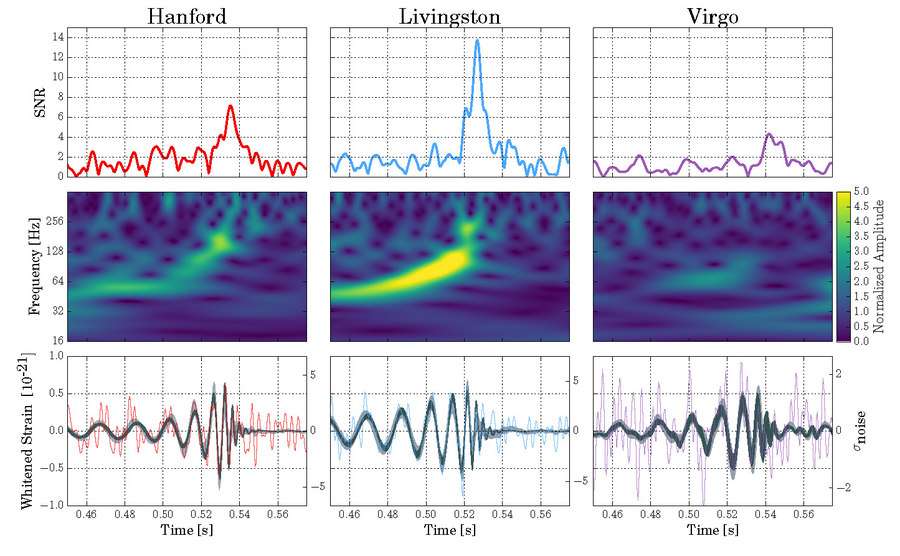
 Credit: LIGO/Virgo Collaboration
Credit: LIGO/Virgo Collaboration
Super EGO
The European Gravitational Observatory, EGO, is a new collaboration working to detect gravitational waves, the ripples in spacetime produced by the acceleration of massive bodies. These tiny ripples were predicted by Einstein's theory of General Relativity, his theory of gravity. The EGO collaboration joins the two US-based LIGO observatories (one in Livingston, Louisiana and one in Hanford, Washington) in the hunt for gravitational waves. EGO has now built a new gravitational wave observatory, called Virgo, in the Italian countryside near Pisa (a town famous for the study of gravity). Like the two LIGO observatories in the US, Virgo works by measuring incredibly tiny changes in distance using laser beams and two mirrors placed at the ends of three-kilometer-long tunnels. The image above shows the first joint gravitational wave event (detected on August 14, 2017) by the LIGO observatories and by Virgo. The images represent the decrease in the length of the detector arms as the gravitational waves passes by. The gravitational wave increases in strength and frequency, which causes the detector length to oscillate. This signal was produced by the merger of two black holes in a binary system, each having a mass in excess of 25 times the mass of the Sun. As the black holes orbit each other, they produce gravitational radiation which robs energy from the binary. This causes the two black holes to spiral together, decreasing the orbital period and producing an increasing amount of gravitational radiation, until finally the two black holes merge, and spacetime settles down. The LIGO-Virgo combination allows for a greatly improved determination of the location of the merger, and allows additional important tests of General Relativity.
Published: October 2, 2017
<
HEA Dictionary ● Archive
● Search HEAPOW
● Other Languages
● HEAPOW on Facebook
● Download all Images
● Education ● HEAD
>

Each week the HEASARC
brings you new, exciting and beautiful images from X-ray and Gamma ray
astronomy. Check back each week and be sure to check out the HEAPOW archive!
Page Author: Dr. Michael F. Corcoran
Last modified Tuesday, 27-Feb-2024 10:15:18 EST


